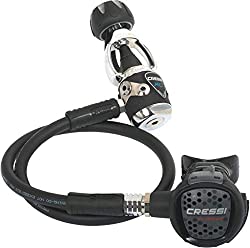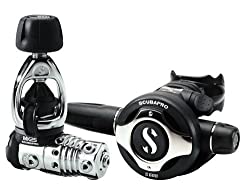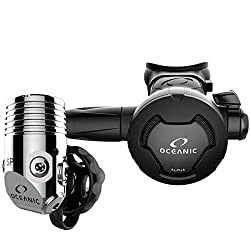Can you imagine the adrenaline rush that comes from diving in icy cold waters? As a scuba diver, one of your most challenging environments will be icy-cold waters. Diving in cold waters requires a thick dry suit or wetsuit and a specialized regulator.
A cold water regulator is a diver’s best friend underwater. Without your regs, you’ll be limited to breath-hold dives and surface level. For this reason, underwater gear brands have specific models for regulators.
In this post, we’ll dive in with five unique and top-rated cold water regulators. There’s also a buying guide so all divers can get to know their gear a bit better. Let’s explore.
| Cold Water Regulators | Brand | Expert Rating | Price |
|---|---|---|---|
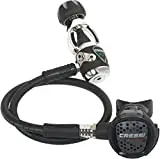 | Cressi |  | |
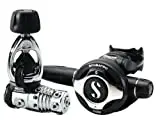 | Scubapro |  | |
 | Apeks XTX40 |  | |
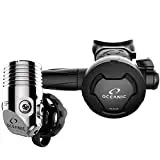 | Oceanic Alpha |  | |
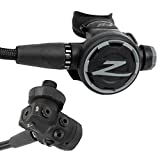 | Zeagle |  |
The Top 5 Cold Water Regulators
There are typically hundreds of cold water regulators out there, but which one is the best? In this section, we break down each product’s pros and cons for convenient comparison. Without further delay, let’s get to our top picks.
1. Cressi Ellipse Titanium MC9
If you are running on a shoestring budget for cold water regulators, this is it. This Cressi cold water regulator sets pretty high market standards.
It is an entry-level gear that has an easy-to-adjust airflow. It has all high and low-pressure ports for your scuba accessories.
It’s also worth mentioning that this product is extremely light-weight. Besides, you can carry it along for diving in all sorts of climates.
The mouthpiece does not cause jaw fatigue. Also, the device employs a brass body for additional durability. The balanced diaphragm makes sure that you have all the features to embark on your aqua adventure safely.
2. ScubaPro MK25 S600
The ScubaPro MK25 S600 is a blend of the high-performance balanced second stage and a flagship balanced piston first stage. The first stage in the MK25 is capable of diving up to 8500 litres per minute. Even at such a diving rate, the pressure drop is minimal.
The piston shaft and mainspring have special protection that prevents the formation of ice crystals. This attribute makes the ScubaPro MK25 be an exceptional cold water regulator. Besides, the components are very light-weight.
The orthodontic mouthpiece reduces jaw fatigue. The inhalation adjustment allows the divers to customize the breathing.
3. Apeks XTX40
This list would be incomplete without the Apeks XTX40. The XTX40 is one of the company’s most affordable offerings. Despite the low price-point, the product does not compromise on performance or quality. It has a diver adjustable breathing resistance control.
These adjustable features allow the user to minimize bubble interference. The first stage of the reg has four medium-pressure ports. There is also an option 5th port for cylinders or side mount.
The device is available in both Yoke or DIN configurations. You can use it for cold waters below 10-degree Celcius. The great thing about buying this product is that it allows mixed gas diving.
4. Oceanic Alpha 10 with Spx First Stage
Durable, sleek, and simple is the best way to describe the Oceanic Alpha 10. It has a high-grade marine chrome construction and weighs only 2.5 pounds. You’ll also notice that the owner’s manual is very comprehensive.
Divers will find the durable design of the equipment to be very user-friendly. You must also know that it holds an EN250A certification. This certification approves the reg for use in waters below 5-degree C.
The reg also allows two different first-stage settings – Yoke or DIN. It’s also worth mentioning that this equipment harbours an orthodontic mouthpiece, which is very comfortable.
5. Zeagle F8 Regulator
Zeagle is one brand belonging to the water sports industry that people associate with top-notch quality. This Zeagle F8 regulator is one of the best offerings from the brand. The brand claim that F8 is a better breather and more long-lasting than most regs in the market.
The new inhalation diaphragm has superior tear power and a better breathing response time. The enhanced exhaust valves ensure lower exhalation and dryness.
Why is it suitable for cold waters? It is because it has a heat sink and Zirconiumplated tube to avoid freeze-up. The mouthpiece employs silicone for a better fit and to reduce fatigue.
Cold Water Regulator Buyer’s Guide
Knowing all the best selling and quality cold water regulators is no enough. To figure out what’s best for you, it’s also mandatory to understand the features. In this buying guide, you’ll learn all the features that ensure a good-quality cold water regulator.
Temperature
Several regulators are apt for cold climate diving. If you play to dive in icy or extremely cold conditions, you should choose a regulator restricting freezing and freeflow. The good news is that the cold water regulators also work well for tropical climates.
Weight
If you are considering buying cold water regulators adequate for dive travel, we have good news. In the current day, there are plenty of models that weigh as little as 2.5 lbs. Generally, most travel regulators use carbon fiber and titanium to reduce overall weight.
However, these are not the ideal material to sustain cold waters. If you want a quality cold water regulator, look for a regulator which equips insulating and sturdy metals like nickel or brass.
Even if you choose a light-weight model, it should not feel flimsy. Durability and weight are very critical if you are venturing in a freezing climate.
Balanced or Unbalanced
In short, if you will use the regulator for cold water diving, better go for a balanced regulator. The difference between a balanced or an unbalanced regulator is the way they breathe.
The balanced regs will offer the same air amount per breath until the tank is empty. On the flip side, it is challenging to breathe from unbalanced regulators when your tank is low on air.
This flow change is an excellent reminder to check the pressure gauge and prevent air emergencies. However, for cold waters, a dramatic shift of flow is risky and impractical. It is also worth mentioning that balanced regs are better for deep diving.
Piston or Diaphragm
The main difference between piston and diaphragm is the method why which you consume the air. Gas from your tank passes into the regs first stage, where it may force a diaphragm or a piston to open and shut with each breath.
Piston first stages have a higher flow rate and allow easier breathing. The diaphragm offers a lower flow rate which disables freeflow. However, the divers might find the diaphragm first stage to be challenging to breathe.
Always opt for an environmentally-sealed diaphragm. The environmentally-sealed diaphragm does not freeze quickly.
Number of Ports
If you dive in cold or warm waters, you’ll need more ports on your regulator’s first stage. Most regulators include one high-pressure port for computers with wireless transmitters or pressure gauges.
Additionally, they’ll also have four low-pressure ports for dry suits, BCD inflator hoses, and second stages. However, if you are diving in cold waters, five ports will not be adequate. Many cold-water divers use several gauges for redundancy.
Also, for some climates, a drysuit is essential. It is not possible to add extra ports to your regs first stage. Therefore, choose a model with more ports.
Wrap Up
Diving in cold water or ice diving is a thrilling experience. However, if you wish to enjoy your cold diving time to the fullest, it’s better to get a cold water regulator. A cold water regulator can come in handy in various situations.
When you are picking a cold water regulator, make sure to consider your preferences as well. All of the cold water regulators on our list have pretty positive user reviews. We hope that this review and buyer’s guide helped you pick the perfect gear.
Best of luck with your cold diving experience!

